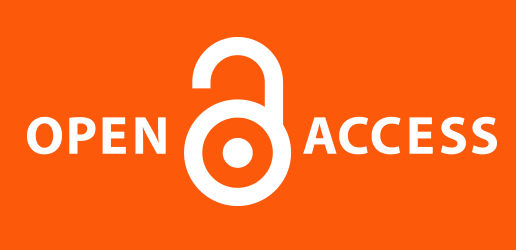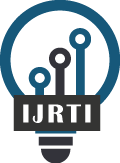|
International Journal for Research Trends and Innovation
International Peer Reviewed & Refereed Journals, Open Access Journal
ISSN Approved Journal No: 2456-3315 | Impact factor: 8.14 | ESTD Year: 2016
Scholarly open access journals, Peer-reviewed, and Refereed Journals, Impact factor 8.14 (Calculate by google scholar and Semantic Scholar | AI-Powered Research Tool) , Multidisciplinary, Monthly, Indexing in all major database & Metadata, Citation Generator, Digital Object Identifier(DOI)
|
Issue: December 2025
Volume 10 | Issue 12
Review Result and Publication of Paper within : 2-3 days
Click Here For more DetailsFor Authors
Forms / Download
Published Issue Details
Editorial Board
Other IMP Links
Facts & Figure
Impact Factor : 8.14
Issue per Year : 12
Volume Published : 10
Issue Published : 115
Article Submitted : 19688
Article Published : 8087
Total Authors : 21392
Total Reviewer : 770
Total Countries : 147
Indexing Partner
Licence
This work is licensed under a Creative Commons Attribution-NonCommercial 4.0 International License







|
Published Paper Details
|
|
| Paper Title: | A Review on FDA`s Review process for new drug applications |
| Authors Name: | DESHAM.MADHURI , Dr.B.V.Ramana |
| Download E-Certificate: | Download |
| Author Reg. ID: |
IJRTI_185284
|
| Published Paper Id: | IJRTI2304022 |
| Published In: | Volume 8 Issue 4, April-2023 |
| DOI: | |
| Abstract: | The Food, Drug, and Cosmetic Act requires the Food and Drug Administration (FDA) to review and approve all new drugs before they can be marketed in the United States. The FDA evaluates new drugs based upon the scientific evidence obtained from clinical studies and other research conducted by a drug’s sponsor, typically a pharmaceutical company. Sponsors submit this information to FDA in a new drug application (NDA). Based on its review of the application, FDA assesses the safety and efficacy of the drug and determines whether it can be marketed in the United States. (We provide a primer that gives an overview of the review process on page 5. Appendix B contains a glossary of key terms.) The Prescription Drug User Fee Act and the Food and Drug Administration Modernization Act In response to the public’s demand for greater access to new drugs to treat life-threatening illnesses, the 1992 Prescription Drug User Fee Act, referred to as PDUFA I, was enacted. The main purpose of PDUFA I was to reduce the time it takes FDA to review new drugs for market approval. It authorized FDA to collect user fees from sponsors to be used towards speeding up the NDA review process. It also established time goals for FDA’s review of NDAs. The FDA reports annually to Congress on how well it has met these time goals (see Appendix C for a list of the goals). In 1997, user fees were reauthorized as part of the Food and Drug Administration Modernization Act. The section of the Act that addresses user fees, referred to as PDUFA II, tightened the deadlines in the goals. It also added new provisions to help speed up the entire drug development process. Most notably, it required FDA to meet with sponsors upon request and codified many existing FDA policies intended to bring life-saving treatments to market faster. User fees have provided additional resources for FDA. The FDA’s Center for Drug Evaluation and Research (CDER) total costs in fiscal year (FY) 2000 for reviewing NDAs was $187 million, of which $86 million was paid for by user fees. The FDA primarily used the funds from user fees to hire more staff and to implement computer systems to speed up its review of NDAs. |
| Keywords: | Approvable: An action assigned to the new drug application (NDA) at the end of the review process when problems exist with the application that need to be addressed before the drug product may be approved. Class I resubmission: An application resubmitted after an approvable or non-approvable letter has stated deficiencies in the following areas: final printed labeling, draft labeling, safety updates, stability updates, phase IV commitments, assay validation data, final release testing on the last 1-2 manufacturing lots (used to support approval), minor reanalysis of data previously submitted to the application, and/or other minor clarifying information. Class II resubmission: An application resubmitted after an approvable or non-approvable letter has stated other deficiencies not under a Class I resubmission including items that require an advisory committee meeting. Clinical hold: A decision made by the Food and Drug Administration (FDA) to stop a clinical trial if there is reason to believe the study cannot be conducted without unreasonable risk to the human subjects enrolled in the trial. The sponsor must address FDA’s concerns before the hold is lifted. Clinical trials or clinical studies: A scientific study with human subjects to examine a drug’s safety and efficacy. Drug development process: The entire process of bringing a drug to market. The process includes laboratory and animal testing of the drug, the investigational NDA to FDA, the clinical trials, and finally the submission of the NDA to FDA for marketing approval. Efficacy supplement: Additional efficacy data submitted by a sponsor to FDA for an already approved drug. FDA requires an efficacy supplement when a sponsor seeks approval for a new indication. Indications: Symptoms or conditions that indicate a specific medical treatment. When FDA approves a drug, it is approved for a specific indication(s) that is described on the drug’s label. Investigational NDA: An application submitted by a sponsor to FDA technically seeking exemption from the federal law that prohibits the shipping of an unapproved drug across state lines. The intent of the application is to provide data to FDA documenting that it is reasonable to begin clinical trials in humans with the drug. If FDA determines that the data are insufficient to proceed, it can place the trials on hold. Manufacturing supplement: Information submitted by the sponsor to FDA on manufacturing changes to an already approved drug. New Drug Application (NDA): An application submitted by a sponsor to FDA to obtain approval to market a drug in the United States. New molecular entity: A drug that contains an active ingredient that has never been approved for marketing in the United States. It can be submitted as either a standard NDA or a priority NDA. Non-approvable: An action assigned to the NDA when, at the end of the review process, significant deficiencies exist in the application that may require additional research on the drug product or reformulation of the drug product before the application can be approved. Primary reviewer: An FDA employee who conducts the bulk of the review by evaluating the data in the NDA and recommends the action FDA should take on a drug. Primary reviewers include clinicians, pharmacists, pharmacologists, statisticians, microbiologists, and chemists. Priority NDA: Priority applications are for drugs that are a significant improvement over drugs already on the market to treat the same condition. Project manager: An FDA employee who manages the NDA by tracking the application’s status and scheduling FDA internal meetings as well as meetings with sponsors. The project manager is a liaison between FDA and the sponsor. Project manager: An FDA employee who manages the NDA by tracking the application’s status and scheduling FDA internal meetings as well as meetings with sponsors. The project manager is a liaison between FDA and the sponsor. Review clock: The review clock is the time between FDA’s receipt of the application and FDA’s decision. The PDUFA III calls for FDA to review and act upon 90 percent of standard NDAs within 10 months and 90 percent of priority applications within 6 months. Review cycle: The first review cycle is from FDA’s receipt of the initial application to FDA’s decision. Multiple review cycles occur when an application receives an approvable or non-approvable decision from FDA, and then the sponsor revises the application and resubmits it to FDA. When the sponsor resubmits the application, the review clock restarts and FDA receives either 2 or 6 months to review the revised application, depending on the information in the resubmission. Secondary reviewer: An FDA employee who reviews the primary reviewer’s work. Secondary reviewers include clinicians, pharmacists, pharmacologists, statisticians, microbiologists, and chemists. Sponsor: A person or entity that is responsible for a drug’s development. It can be an individual, government agency, or a pharmaceutical company. Standard NDA: Standard applications are for all applications not classified as priority. Total approval time: Total approval time is the time from the date of FDA’s receipt of the original application to the date of the application’s approval. This time can include multiple review cycles and the time spent by the sponsor revising the application between review cycles. |
| Cite Article: | "A Review on FDA`s Review process for new drug applications", International Journal of Science & Engineering Development Research (www.ijrti.org), ISSN:2455-2631, Vol.8, Issue 4, page no.126 - 136, April-2023, Available :http://www.ijrti.org/papers/IJRTI2304022.pdf |
| Downloads: | 000205163 |
| ISSN: |
2456-3315 | IMPACT FACTOR: 8.14 Calculated By Google Scholar| ESTD YEAR: 2016 An International Scholarly Open Access Journal, Peer-Reviewed, Refereed Journal Impact Factor 8.14 Calculate by Google Scholar and Semantic Scholar | AI-Powered Research Tool, Multidisciplinary, Monthly, Multilanguage Journal Indexing in All Major Database & Metadata, Citation Generator |
| Publication Details: |
Published Paper ID: IJRTI2304022
Registration ID:185284
Published In: Volume 8 Issue 4, April-2023
DOI (Digital Object Identifier):
Page No: 126 - 136 Country: Nandyal, Andhra Pradesh, India Research Area: Pharmacy Publisher : IJ Publication Published Paper URL : https://www.ijrti.org/viewpaperforall?paper=IJRTI2304022 Published Paper PDF: https://www.ijrti.org/papers/IJRTI2304022 |
| Share Article: | |
|
Click Here to Download This Article |
|
| Article Preview | |
|
|
|
Major Indexing from www.ijrti.org
| Google Scholar | ResearcherID Thomson Reuters | Mendeley : reference manager | Academia.edu |
| arXiv.org : cornell university library | Research Gate | CiteSeerX | DOAJ : Directory of Open Access Journals |
| DRJI | Index Copernicus International | Scribd | DocStoc |
ISSN Details
 |
 |
ISSN: 2456-3315
Impact Factor: 8.14 and ISSN APPROVED,
Journal Starting Year (ESTD) : 2016
DOI (A digital object identifier)
 Providing A digital object identifier by DOI.ONE How to Get DOI? |
Conference
Open Access License Policy
Important Details
Join RMS/Earn 300
WhatsApp
Click Here
Click Here
Indexing Partner |
|||
| Copyright © 2025 - All Rights Reserved - IJRTI | |||






